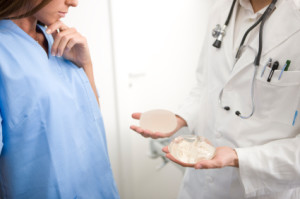Tips for Healing from a Breast Augmentation
For most patients, getting ready for breast augmentation (or any plastic surgery) involves a combination of nervousness for the procedure and excitement about their results. As great as this optimism is, it’s also important to realize that you won’t find a perfect and polished appearance the minute you awake from surgery. Your true results won’t be visible until your body heals, your swelling is gone, and your incision lines fade. In your eagerness, it’s easy to mentally skip over the recovery period, but those first days and weeks after surgery are an opportunity for you to take several measures to help your body heal and to make your final results as satisfying as possible. While every patient is unique, below are a few ways you can make the most of your body’s healing time.
 Follow post-surgical instructions. This is the most important element to a healthy and successful recovery. As a double board-certified plastic surgeon, I’ve been guiding patients through surgery and recovery for over 30 years, and as your surgeon, I’m also familiar with all the specific details of your case. Your aftercare instructions are based on your individual needs and your unique procedure, and they are the key to a healthier, more comfortable, and more successful healing process.
Follow post-surgical instructions. This is the most important element to a healthy and successful recovery. As a double board-certified plastic surgeon, I’ve been guiding patients through surgery and recovery for over 30 years, and as your surgeon, I’m also familiar with all the specific details of your case. Your aftercare instructions are based on your individual needs and your unique procedure, and they are the key to a healthier, more comfortable, and more successful healing process.- Find the right balance of activity for each stage of the process. While I’ll be able to give you some guidelines based on your unique needs and your procedure (for example, did you only have a breast augmentation or did you pair it with a breast lift as well?), it’s important to be up and walking around a little bit every few hours as soon as possible to lower your risk for blood clots. But while some level of activity is vital, you should also be cautious not to push your body too hard too soon after breast surgery, because this can cause complications and a much longer healing process.
- Take your pain medication. While different patients may need different amounts of pain management, you should be honest with yourself about whether or not you actually need it. Allowing yourself to be in more pain than you need to be can raise your blood pressure, which increases your risk for a number of problems and complications, so while you shouldn’t take too much pain medicine, you should also avoid taking too little.
- Follow through with all of your post-surgical appointments. One of your most effective tools for a healthy recovery and ideal plastic surgery results is careful and consistent monitoring. Problems may arise at any stage of the healing process, and there may be warning signs you aren’t aware of or haven’t noticed, so keeping your follow-up appointments at my office is a crucial part of ensuring that you are recovering correctly.
- Don’t be afraid to ask questions. After your surgery, you may have concerns or symptoms that arise, and unfortunately, many patients react by searching the web to see if their symptoms are normal or a warning sign. While the internet can be a useful tool in some cases, you may come across information that is either inaccurate or is intended for other patients in different circumstances, so your best option is to call me and ask if you should be concerned, because I’ll be able to base my recommendation on the specific details of your case.
Thinking about your breast augmentation recovery can be nerve-wracking, but as long as you follow your post-surgical instructions and the tips above and stay in communication with me throughout the process, you can keep your risks low and help your body heal more smoothly and more quickly. To start discussing whether cosmetic surgery is the right choice for you, schedule a consultation with me, Dr. Franklyn Elliott. Or, for more helpful tips and plastic surgery news, follow me on Facebook, Twitter, and Google+.
